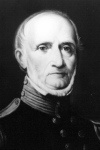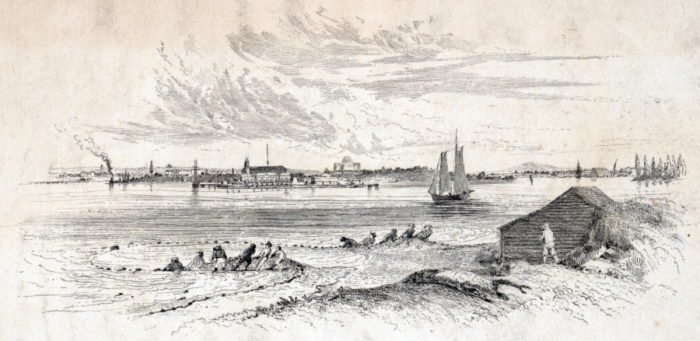
Last week, we looked at two deaths in 1853 at the Washington Navy Yard, and how diarist Michael Shiner reported them in his journal. Today, we will continue with the sad tales, starting with, perhaps the saddest. It occurred not directly at the Navy Yard, but just up the street, at the Marine Barracks, where Archibald Henderson (pictured) was the long-running commandant.
Shiner gets the gist of the story:
a boy who was Accidently Shot a son of Sergeant Tansil was shot by Sergeant Luskeys boy by a discharge of a musket the 10th day of may 1853
The Washington Evening Star of the following day does a bit better in describing what happened:
A loaded gun was left in the quarters of Mr. Luskey, where his son George and young Tansill were. Both being under the impression that the gun was unloaded, Luskey, at the request of Tansill, put a cap upon it and fired it, the ball entered George Tansill’s mouth and passed through the back of his head near the top, carrying with it a portion of the brain.
There seems to have been some confusion on the last name of the deceased, whether it was Tansil or Tansill – and, in fact, what his first name was, the article refers to him both as ‘George’ and ‘Charles’ in different places. Either way, he was buried under the name Charles Tansil in Congressional Cemetery.

More horrifying is that these three deaths came in less than a month. It would be another six months before the final death would occur, the event that Shiner had alluded to earlier, that of Charles King.
King was a young local, who “promised fair to be an ornament to the profession of Engineer, which he had selected and was studying theoretically and practically the past three years” as his obituary in the Evening Star proclaimed. The son of Martin King, local businessman, the younger King had been working on a steam engine at the Navy Yard when the boiler burst. He would die two days later, on November 14.
Shiner reported it thus:
on tuesday December 12th 1853 the expolsion of the Boiler of the Steam Engine No 1 in the washington navy yard and scalded a apprentice in the machinst in Department by the name of Charles King and he died on the 15th of December 1853 on Tuesday a son of the late martin king
Shiner was off by a month, and his father was, according to the newspapers of the time, still very much alive.
In short, the diary of Shiner gets a lot of the stories right, but misses some of the details, especially in regards to dates, which indicates that he wrote them well after the time they occurred. The diary remains an important piece of Navy Yard history, and one to which I will undoubtedly return many times in the future.
